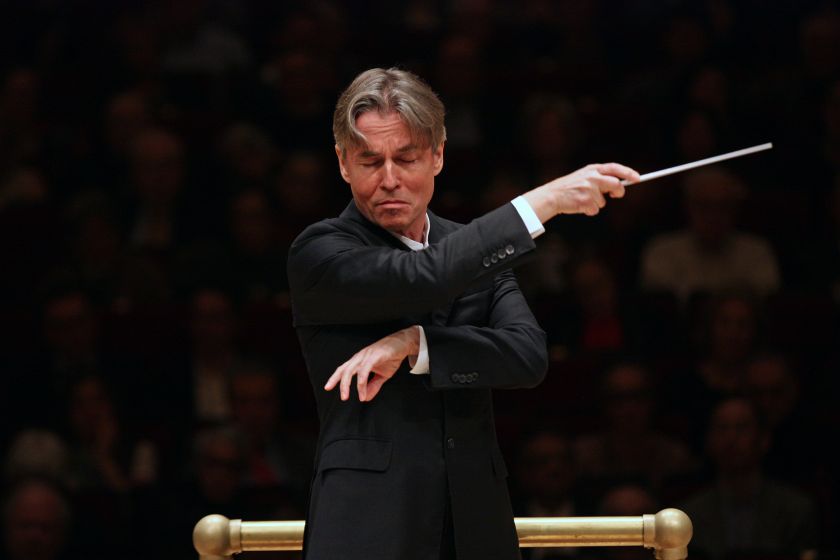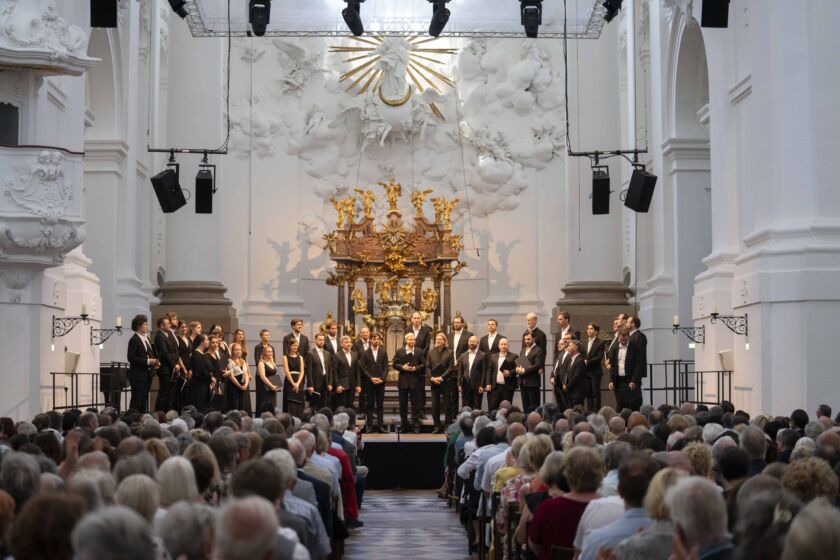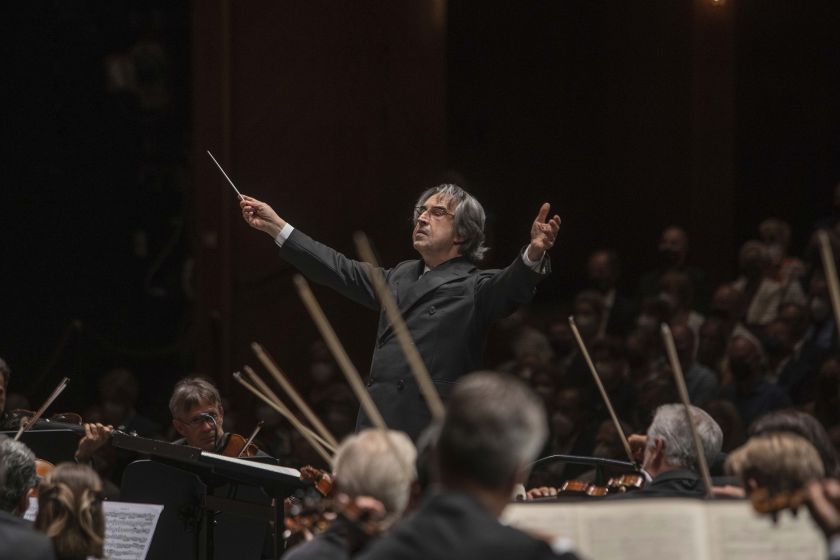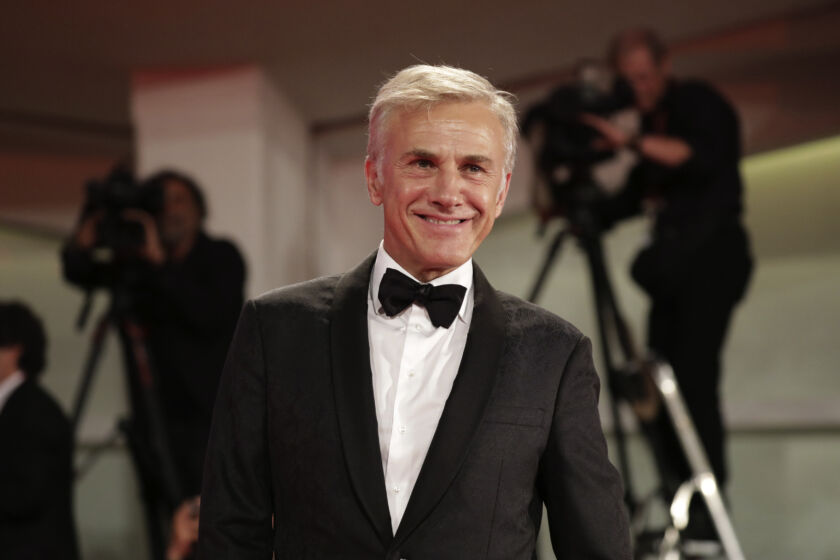Spiritual, Dramatic, Profound
A galaxy of stars among the soloists, conductors and orchestras of this season brings revolutionary and anarchic sounds from the renaissance and daring tonal experiments from our own times to the Festival.

Das Floß der Medusa – The Raft of the Medusa. Any list of major oratorios from the second half of the 20th century would be incomplete without Hans Werner Henze’s work. The Raft became famous for the famous fracas at its world premiere. In Hamburg, members of the chorus and the orchestra refused to go on stage because some of Henze’s politically active collaborators had flown a red flag. After tumultuous scenes, the auditorium was cleared, leading to the curious case that a world premiere of a musical work took place via radio only. A recording of the rehearsals was then released by Deutsche Grammophon as a double album, and soon live performances throughout the world proved that the piece was not merely crude political activism in the spirit of the 1968 movement, but had a profound humanistic message, based on the true story of the sailors aboard the Medusa. After the frigate had capsized, the officers saved themselves in the lifeboats, abandoning the sailors on a raft. Only a handful of people survived – at the Louvre, the shocking painting by Théodore Géricault stands testament to the episode to this day. Henze’s oratorio renews the appeal for humanity for his own generation, “taught by reality, fervently desiring to topple it”, as the final words of the libretto say – first spoken by Charles Regnier, then by major theatre directors ranging all the way to Peter Stein.

Musical and dramatic confrontations. On 18 July, the Salzburg Festival opens with a performance conducted by Ingo Metzmacher in which Udo Samel takes on the part of the narrator, Kathrin Zukowski sings the role of “Madame La Mort” and Georg Nigl that of “Jean-Charles”, the character waving the tattered red flag while already in the throes of death in Géricault’s painting. At the Felsenreitschule, Henze’s minimalistic yet extremely effective staging instruction will make a great impression: at the beginning of the performance, all the singers assemble behind the “breathing” winds and brass; only “La Mort” stands among the strings. Gradually, the “dying” chorus members wander over to the side of Death… It’s hard to imagine a more profound beginning for the Ouverture spirituelle, as the first Salzburg Festival week has long been known. It is followed by musical and dramatic juxtapositions of revolutionary, anarchic sounds from the renaissance and baroque eras (from Orlando di Lasso and Carlo Gesualdo to Johann Sebastian Bach) with daring visions from the 20th century and our own times (from Luigi Nono’s Io – part of Prometeo, a piece well familiar to Salzburg audiences – to Arvo Pärt and Galina Ustvolskaya). The programmatic guidelines of the following concerts, first and foremost Dmitri Shostakovich’s music, are already contained within this overture.

Fascinating cross-references. As the Festival continues, a galaxy of stars – soloists and conductors alike – create intriguing cross-references. For example, the Vienna Philharmonic performs Oedipus Rex in its first 2025 Salzburg concert under Lorenzo Viotti, demonstrating that Igor Stravinsky was not only one of the most versatile composers of musical modernism, but also an admirer of his Russian “predecessor” Piotr Ilyich Tchaikovsky, whose Fourth Symphony concludes the concerts on 27 and 28 July. Like Stravinsky’s oratorio, the Fourth also conjures fate, but without a trace of mythological distance – instead, as a highly personal accusation that starts with rage and ends in resignation.
The philharmonic “house orchestra” of the Festival continues in an appropriately antagonistic vein: On 9 and 10 August, Andris Nelsons conjoins the only completed movement of Gustav Mahler’s Tenth, the Adagio, with Shostakovich’s Tenth Symphony, which contains a grimacing, resounding portrait of the dictator Josef Stalin. Twice, we find conceptual and stylistic correspondence with works by Anton Bruckner: by Riccardo Muti (15-17 August) between the Mass in F minor and Franz Schubert’s “Tragic” Fourth Symphony, and then by Franz Welser-Möst (28 and 30 August) between the incomplete Ninth and Mieczysław Weinberg’s Second Symphony, written in 1946 in reaction to the Soviet victory celebrations. Like many a work by Weinberg’s friend Shostakovich of that period, it may have a cheerful ending, but sounds melancholy, resigned, desperate for large swaths: the call for humanity which began with Henze during the very first concert of the Festival continues to ring true, 130 years after the last survivors of the “Medusa” were saved. The war might have been won. But on the inside, it was far from over.
The fact that the Vienna Philharmonic and Muti dedicate themselves – not for the first time – to an early Schubert symphony, one of those routinely neglected in bygone times, may also be interpreted as programmatic and dramaturgical design, for the two large-scale late works of the composer, the “Unfinished” and the “Great C major Symphony” will be performed by Jordi Savall and his ensemble Le Concert des Nations on 1 August. Furthermore, Luciano Berio’s Renderings also refer to an “unfinished” Schubert symphony, namely his sketches for a work in D major, noted during the composer’s last year of life, 1828. The shooting star Klaus Mäkelä combines them with Gustav Mahler’s Fifth Symphony when he conducts the Concertgebouw Orchestra Amsterdam on 21 August. The Fifth is a work that begins with a funeral march and continues with violent emotional outbursts, a Scherzo garlanded with folk dances and the famous “Adagietto”, a “love song” for Alma Schindler, whom Mahler would later marry, ending with an astonishingly cheerful, albeit musically highly complex finale. Towards the end of the Festival, several knots seem to come undone: on 15 August, Daniel Barenboim celebrates Beethoven’s “Eroica” with the West-Eastern Divan Orchestra, another work with a funeral march in its midst, leading to a Promethean final movement of redemption. The Gustav Mahler Youth Orchestra answers Tchaikovsky’s Fourth, in which the individual remains “in lonely isolation amidst the general boisterousness of the feast”, as the composer described it, with his Fifth, which is also dominated by a motif signifying fate, but which ultimately appears in a victorious, positive guise. It is flanked – with Renaud Capuçon as the soloist – by Erich Wolfgang Korngold’s Violin Concerto, with which the late romantic composer, who had sworn not to write any music for the concert hall as long as Hitler was in power, made his comeback: the successful master from Hollywood delivered a virtuoso arrangement of film music fragments in the classical form of the concerto.

Fighting and Triumphs. One response to 1945 was the signal from exile for a forward-facing atmosphere of new beginnings. A question mark answer this at the Festival’s finale: for the Berlin Philharmonic’s guest appearance on 31 August, Kirill Petrenko has chosen Mahler’s last completed symphony, the Ninth, a pandemonium of life with all its passions, struggles, small triumphs and noisy tribulations – culminating in a farewell, a mighty swelling of sound, then a gently fading orchestral chant of rapture and unsurpassed beauty.
The Festival could not end on a more touching note. It corresponds remarkably with the music András Schiff presents one month prior at the main auditorium of the Mozarteum, music removed from all subjective expressivity: Johann Sebastian Bach’s Kunst der Fuge. It is one of those works that have remained a fragment, like Schubert’s “Unfinished”, yet attained mysterious perfection. The solo recitals of the Salzburg Festival also correspond spiritually in several instances with the “large” symphonic concerts, some of which feature star guests in symphonic highlights. One example is Lang Lang with Felix Mendelssohn’s stormy and agile Piano Concerto in G minor, performed on 15 August in the “Eroica” programme of the West-Eastern Divan Orchestra under Barenboim’s baton.
Some of the most beautiful young voices will also be heard in the concert programme. Marina Viotti, whose television performance at the opening of the Olympic Games in Paris last year made headlines for its breathtaking balancing act between hard rock and opera, will sing the role of Jocasta in Stravinsky’s Oedipus Rex under the baton of her brother Lorenzo, joined by Allan Clayton in the title role. It promises a walk on the wild side of baroque coloratura and sharply-honed neoclassical contours, commented upon by Christoph Waltz in the role of the neutral, distanced narrator (27 and 28 July). Mélissa Petit and Patricia Nolz share the soprano solos in Mozart’s Unfinished Mass in C minor, traditionally performed at the Festival; this year’s rendition on 6 and 7 August will be overseen by Gianluca Capuano, who conducts the chorus Il Canto di Orfeo and the Musiciens du Prince – Monaco.
A concert performance of the first act of Wagner’s Die Walküre with the Vienna Philharmonic under the baton of Yannick Nézet-Séguin in matinees on 23 and 24 August is combined with the overture to Lohengrin and the Siegfried Idyll, in which the Bayreuth master practiced almost chamber music-like restraint for once. The winter storms of Die Walküre are vanquished by the “Wonnemond”, the “month of maying”: Elza van den Heever and Stanislas de Barbeyrac in the roles of Sieglinde and Siegmund withstand John Relyea’s Hunding. The performance may not be staged, but it’s sure to be great theatre.
First published on 31.05.2025 in Die Presse Kultur Spezial: Salzburger Festspiele
Translation: Alexa Nieschlag
